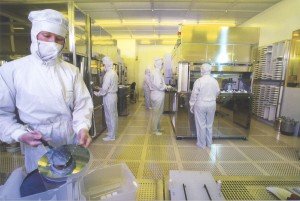Nov 18 2009
Scientists at the Department of Energy's Lawrence Berkeley National Laboratory, in cooperation with the International SEMATECH Manufacturing Initiative (ISMI), are releasing for beta testing a computer-based tool to help the world's semiconductor manufacturing facilities ("fabs") evaluate and improve their energy efficiency.

"We developed FABS21 to allow the operators of semiconductor manufacturing facilities to continuously benchmark and improve energy and water efficiency of semiconductor facilities," says Paul Mathew, a Staff Scientist in the Environmental Energy Technologies Division of Berkeley Lab.
"Resource efficiency is not just an environmental initiative; it is also an important business process that can reduce costs for fabs," said James Beasley, ESH Technology Manager for ISMI. "ISMI is pleased to be partnering with Berkley Lab on this project. Finding ways to conserve resources is vital to the long-term growth of the semiconductor industry, and tools such as the FABS21 benchmark database help ISMI and the industry address the challenges of sustainable manufacturing."
Benchmarking is the process of comparing a building's or facility's energy and water use to those of peer facilities.
The tool draws on previous research at Berkeley Lab into benchmarking for high-technology facilities such as laboratories, data centers, and clean rooms. It also makes use of the survey methods and data collected through the Semiconductor Industry Association (SIA). Berkeley Lab researchers worked with ISMI's Green Fab working group to validate the benchmarking methodology.
Development of FABS21 is sponsored by ISMI, the global consortium of the world's major semiconductor manufacturers.
Users can benchmark their facilities using up to 46 different building and system level metrics, which fall into two categories. They can benchmark the overall facility energy and water efficiency, for example, as kWh/square centimeter of wafer output, and gallons per square foot of manufacturing space. These metrics will help facility operators who are applying for certification in the LEED-EBOM (Existing Buildings Operations and Maintenance) rating system.
FABS21 also gives users system-level metrics, which are used for "action-oriented benchmarking." With this information, users can identify potential actions to improve specific system areas such as ventilation air flow efficiency (Watts/cubic feet per minute), and chiller plant efficiency (kW/ton). The tool has metrics for environmental conditions, ventilation, cooling & heating, process equipment, and lighting & electrical systems.
Users can benchmark a facility across a set of years, as well as compare to a group of similar facilities. They can filter the peer facilities dataset based on climate zone, facility type, and cleanliness level.
FABS21 is being beta-tested by members of ISMI and is expected to go into full release in November 2009.
Development team members include Paul Mathew, Martin Stoufer, of the Information Technology division, and Anthony Ma of EETD.